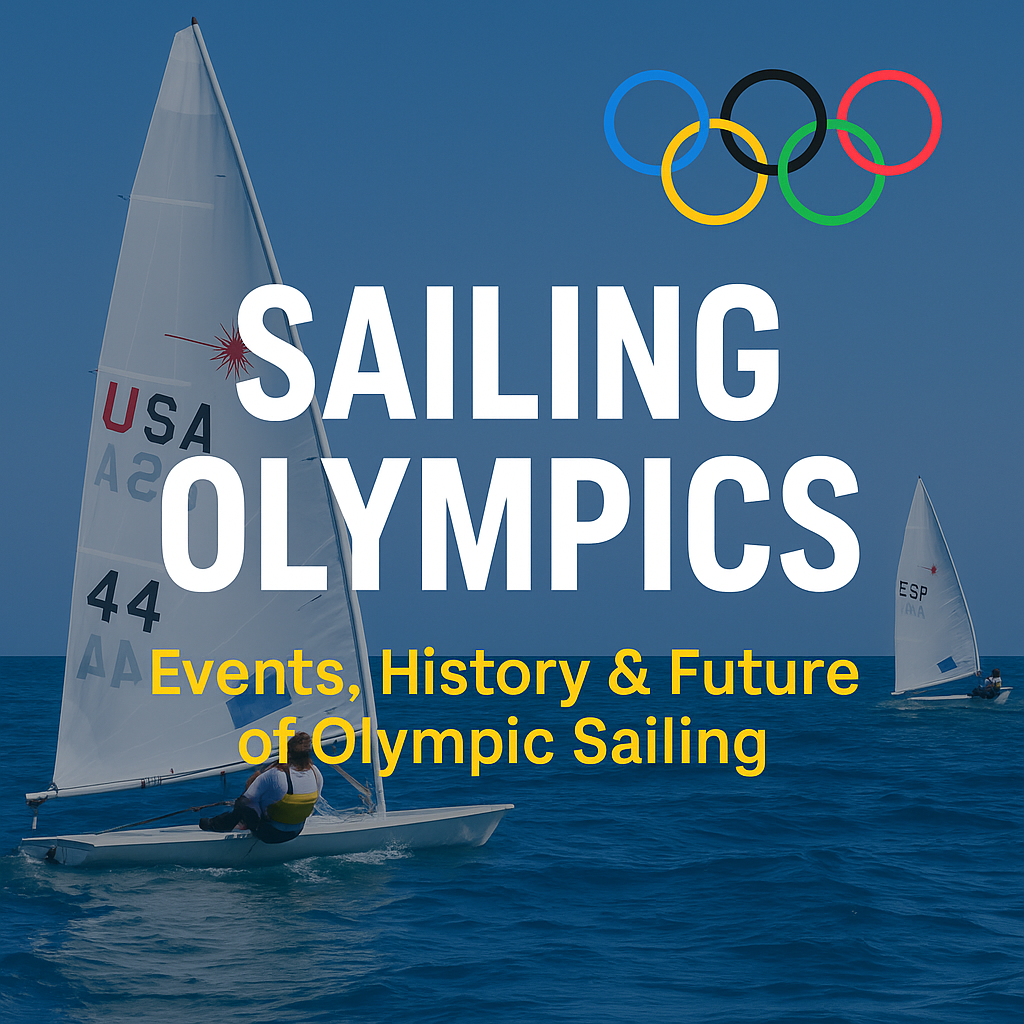Introduction to Sailing in the Olympics
Sailing Olympics are more than a sport. It is a celebration of wind, water, and world-class skill. Since its debut in the early 20th century, sailing has grown into one of the most exciting and technical events at the Summer Games. It challenges both the body and mind, rewarding precision, bravery, and strategy.
Evolution of Olympic Sailing Events
Sailing became an official Olympic sport in 1900. Over time, the sport evolved to include a wider variety of boat classes, more inclusive participation, and advanced technologies. From simple wooden boats to high-tech foiling vessels, Olympic sailing continues to inspire future generations.
Types of Sailing Classes in the Olympics
Today, the Games include classes like Laser, 470, Nacra 17, iQFoil, and Kite. These classes are designed for speed, agility, and fair competition. Some are for solo sailors; others are for mixed-gender teams. Each class brings a unique challenge, showcasing the diversity of modern sailing.
Olympic Sailing Rules and Scoring System
In each race, sailors aim to finish first, but it’s not just about speed. A low-point system awards points based on finishing position. The goal is to have the lowest total points across multiple races. Strategy, positioning, and clean sailing make the difference between winning gold and falling behind.
Key Equipment Used in Olympic Sailing
Olympic sailing gear is sleek, light, and fast. Boats are custom-built for each class, using carbon fiber and smart materials. Sailors wear performance gear for safety and speed. Each item is strictly regulated to ensure fair play and highlight sailor skill.
Top Countries and Athletes in Olympic Sailing History
Great Britain, Australia, and New Zealand lead in Olympic sailing medals. Names like Ben Ainslie, Hannah Mills, and Peter Burling have become legends. Their success inspires young sailors everywhere and proves the power of dedication and discipline.
Training and Qualification for Olympic Sailing
To qualify, sailors compete in international regattas and world championships. They train for years to build strength, balance, and decision-making. Olympic sailors often start young and train daily to sharpen their instincts and reaction times.
Interested in a sleek, sporty look to match your sailing lifestyle? Discover the style and precision of the Low Taper Fade haircut.
Weather and Wind Conditions: Their Role in Olympic Sailing
Wind is everything in sailing. The best sailors read wind shifts, pressure, and currents like a second language. Olympic venues are chosen for their challenging but fair conditions. Races test skill in calm seas and rough waters alike.
Highlights from Past Olympic Sailing Competitions
Each Games offers unforgettable moments. From photo finishes to surprise underdog wins, Olympic sailing delivers drama and triumph. Tokyo 2020 brought in new windsurfing classes, while Paris 2024 promises kiteboarding thrills.
Future of Sailing in the Olympics
Sailing is entering a new era. Foiling boats, gender-balanced teams, and greener equipment are shaping the future. With the rise of kiteboarding and iQFoil, sailing is faster, more inclusive, and more sustainable than ever.
How to Watch and Follow Olympic Sailing
You can follow the action on official Olympic channels, sports networks, and sailing federation streams. Real-time trackers, onboard cameras, and expert commentary make the races more exciting than ever before.
Learn how subtle hair color changes can refresh your look—check out our style guide on Strands Hint for a soft yet striking transformation.
Glossary of Common Olympic Sailing Terms
- Tack: Turning the bow of the boat through the wind.
- Gybe: Turning the stern of the boat through the wind.
- Leeward: The side away from the wind.
- Windward: The side facing the wind.
- Mark: A buoy that boats must round.
FAQs About Sailing Olympics
What sailing events are in the Olympic Games?
Current events include dinghy races, windsurfing, foiling catamarans, and the exciting new kiteboarding events. Each class is designed to test different skills.
How do sailors qualify for the Olympics?
They earn spots through world championships, regional qualifiers, and national trials. The best sailors compete in elite regattas worldwide to earn their place.
What are the most successful countries in Olympic sailing?
Great Britain leads in total medals, followed by Australia and New Zealand. These countries have strong sailing cultures and world-class training programs.
How is scoring done in Olympic sailing races?
Points are given based on race position (1 for first, 2 for second, etc.). Sailors discard their worst result, and the lowest overall score wins.
What is the difference between dinghy and keelboat classes?
Dinghies are small, lightweight boats often raced solo or in pairs. Keelboats are larger and have a fixed keel, offering more stability but requiring more crew.
